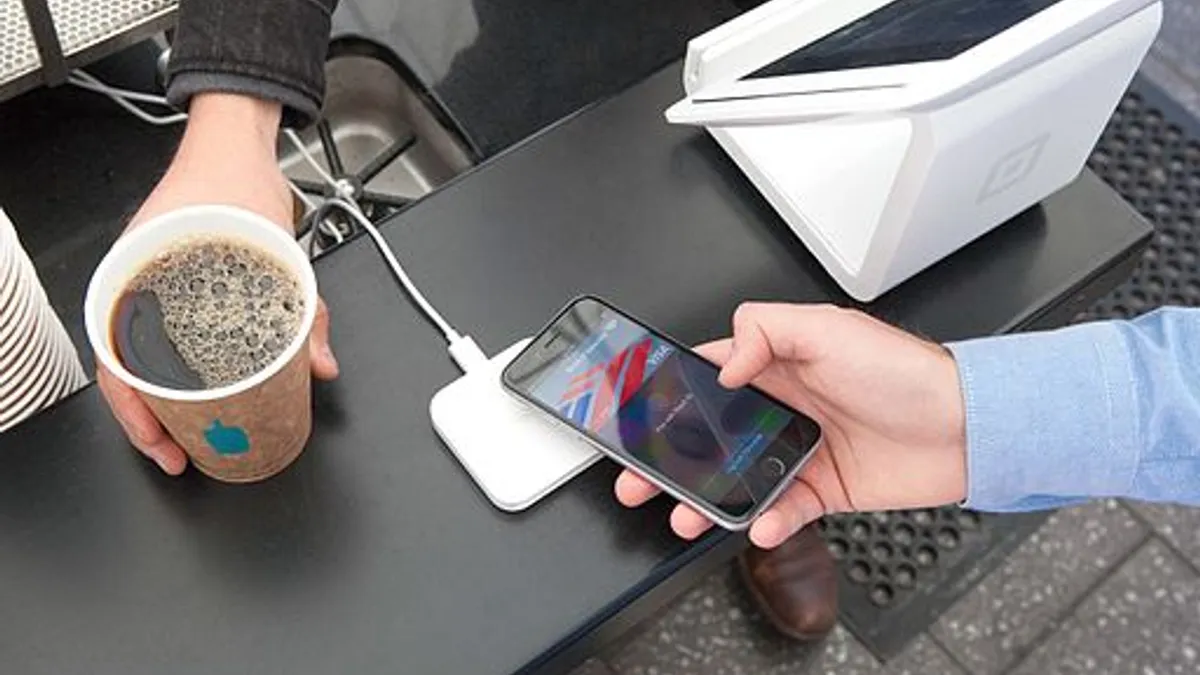Dive Brief:
- Even though more than 81% of Americans own a smartphone, according to Pew Research Center, major mobile payment apps have adoption rates of less than 10% in the U.S., CNBC reported.
- Americans' use of mobile pay far lags China, where more than 80% of consumers last year used that form of transaction, according to Bain & Company, a management consultancy.
- "A big driver of mobile adoption is just how big an improvement is it," Gerard du Toit, chief of the banking and payments sector of Bain's financial services practice in North America, told CNBC. "When it comes to the U.S., there is a good enough solution there already."
Dive Insight:
The stark difference in mobile pay adoption may stem from the other payment methods available. In some countries, prior to mobile pay, cash was the dominant way to transact, where in the U.S., payment cards reign.
Payment cards ranked as the preferred payment method for 80% of Americans surveyed last year by payment processor TSYS. That figure combines debit (54%) and credit cards (26%).
About 16% of consumers surveyed in a 2017 JPMorgan study said they had used a mobile wallet. Consumers may not be the only slow adopters. About 36% of retailers said they accept mobile wallet payments, according to the same study.
Will Graylin, founder and CEO of LoopPay, said there needs to be at least 90% of acceptance among merchants to get even 1% of consumers to change a habit, according to CNBC. "The reality is we're not there yet," he said.
Peer-to-peer (P2P) payment services such as Venmo and Zelle may prove to be the gateway for many Americans paying on the go. About 44% of consumers surveyed said they used P2P payments, according to a 2018 Bank of America study. That figure jumps to 69% of Gen Z respondents and 51% of millennials.
Regulators steered India away from paper money for the tax revenue that could be gained in cashless transactions. The government also pushed for low-value bank-to-bank transactions to be available in real time.
In China, tech behemoths such as Tencent and Alibaba eliminated the need for credit-card middlemen by appealing to both merchants and consumers.
Credit-card companies Mastercard and Visa have much to lose when more Americans adopt mobile pay — namely, the cut they get every time a consumer swipes a card. Cash-back rewards and travel perks, too, have made U.S. consumers more reluctant to cut ties with card issuers.
Finally, a real-time payments (RTP) system in the U.S. isn't as widely developed as in other countries. More than half of demand deposit accounts have access to the network The Clearing House has been operating since 2017. But wider adoption may depend on how the Federal Reserve proceeds with its own RTP system, which it aims to have available by 2023 or 2024.














